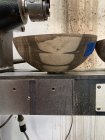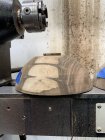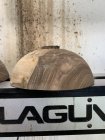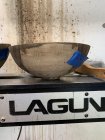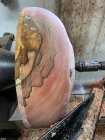Would appreciate your feedback on the curve/shape of the these two. I feel the one beneath the chuck is what Raffan might consider “ponderous”?
Any feedback on improving the catenary curve would be appreciated!
Any feedback on improving the catenary curve would be appreciated!

